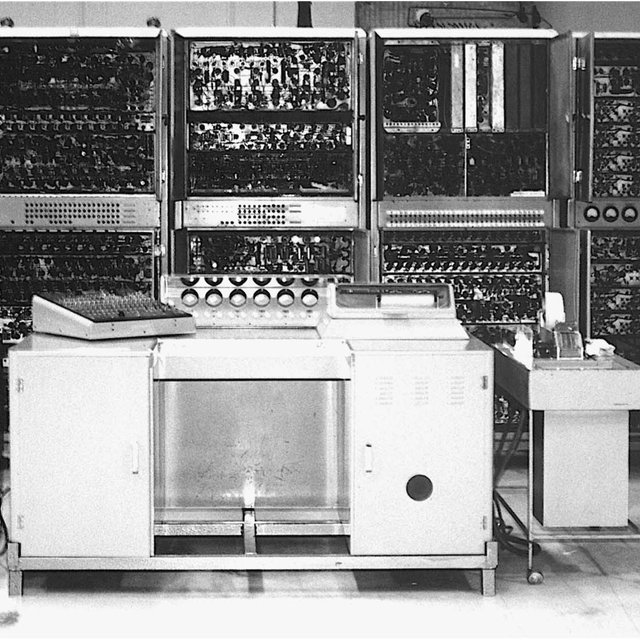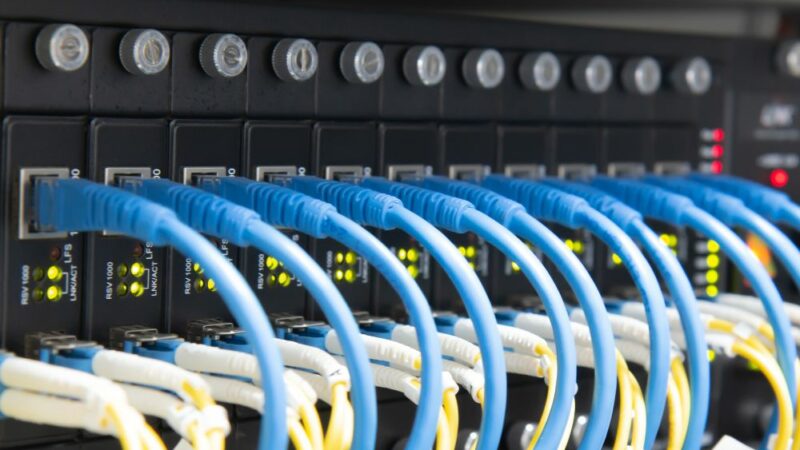Generation of Computer 1st to 5th: All You Need To Know

“Generation” is a word that describes a group of people born in a particular period. But wait, is it only applicable for humans or people? The answer is no. Whether it is a living or non-living thing, everything has a generation, and one of those is the generation of computers.
Moreover, the gift of technology changed the whole world and gave us the things and tools to read this article even. In this article, you will come across all five generations of computers. So just read, connect, and explore.
History Of Computer
The generation that grew in the worldwide desktop and laptop revolution from the 1980s from its earliest age. However, the computer’s history spans back several decades, though, and five generations of computers are defined.
Each generation of computers is characterized by an important technical advancement, which radically affects how computers function – making machinery more compact, cost-effective, and resilient. The first question in your mind would be how many generations of computers have? Well, the answer is 5.
Generation of Computer
The precise developments in computer technology throughout time are referred to as computer generation. However, Electronic circuits were created for calculation in 1946. Whereas, the gears and other mechanical components used to count on prior computer devices, it has changed.
The circuits were smaller and progressed in each new generation than in prior generations. Miniaturization contributes towards increasing computer performance, storage, and power.
First Generation of Computers – Vacuum Tubes
It was in the year 1940 when the First Generation of computers came. You must be thinking the first generation of computers was based on which technology? These early computers employed vacuum tubes like circuitry and storage magnetic drums. As a result, they were huge, physically occupying whole rooms and cost a fortune to run. These materials are ineffective, causing much heat, sucking enormous power, and generating much heat, resulting in continuous failures.
These first-generation computers were based on “machine language” (the most basic programming language that computers can understand). However, these computers confined themselves to resolving one issue at a time. Punched cards and paper used for input. On printouts, output came out. And, the era of first-generation computers ended in 1956.
Some of the first generation computers are as follows:
Atanasoff Berry Computer (ABC): The first automated electronic digital computer was built between 1937 and 1942. It was named in honor of two authors, John Vicent Atanasoff and Clifford Berry, his assistant.
MARK I: The first electromechanical order, produced by Howard Aiken, who based his field studies, including the work of Babbage. This makes him the Automatic Sequence Controller Calculator, the originator of the ASCC.
UNIVAC: Universal Automatic Computers have paved the path to exponential computer growth and advancement.
Second Generation of Computers – Transistors
It began in 1956. Vacuum pipes replaced the Second Generation of computing with transistors. Although created in 1947, transistors were not imported in computers considerably until the end of the 1950s. However, gthey improved a lot over the vacuum tube, even if computers were exposed to harmful heat. They were, however, far superior to the vacuum pipes, making computers less powerful, quicker, and cheaper. You still rely on the input/printout punched card.
After years of research, the transistor was ultimately invented by Physicists John Bardeen, Walter Brattain, and William Shockley, who understood the silicon characteristics in quartz stone.
The transistor phrase combines the English word transfer resistor and is a multi-functional electronic semiconductor, such as amplifying, oscillating, switching, or rectification. However, the basic elements were pretty straightforward. Each was soldered on top of a circuit board, which was used to link to other components.
It progressed from a cryptic binary language to symbolic languages (assembly). This allowed programmers to write words for commands. At around the same time, high programming languages were invented. Although, the first computers to store instructions on their memory – move from magnetic drum to magnetic core technology. These were transistor driven devices. Moreover, for the nuclear power business, the initial stages of such devices have been built. The last year of second-generation computers was 1963.
The U.S. Navy is using second-generation computers to develop the first flying simulator. Although some of the computers previously constructed at this timeframe were: transistors.
IBM 1401, UNIVAC M460 series, Honeywell 800 and 5000 NCR 315, IBM 7090 and 7094, the 501 and 601 RCA.
In this generation and many more, the Remington Rand UNIVAC LARC and IBM Stretch supercomputers (1961) have been built into the competition and boomed their growth.
The Third Generation of Computers– Integrated Circuits
The third generation of computers became popular in 1964. Transistors were now miniaturized and placed on silicon chips at this stage (called semiconductors). Moreover, the speed and efficiency of this equipment have increased significantly. These were the first computers to interact with keyboard and displays interfacing with an operating system. Moreover, it represents a big jump forward from the punching cards and prints. This allowed the machines, using central software to monitor memory, to execute numerous programs simultaneously.
Due to these improvements that made machinery more and more affordable, in the 1960s, a new market segment emerged. Jack Kilby invented the IC. However, the progress reduced the size, confidence, and efficiency of the computers. Time-sharing and multi-programming system software were used throughout this remote monitoring generation. Moreover, high-level languages were utilized throughout this Generation. This generation of computers lasted till 1971.
Some of the key features of third-generation computers are :
- They Consume less electricity.
- Faster
- IC used
- Supported high-level language
- AC required
- Smaller size
- Lesser maintenance
- Less heating
Some of the famous computers are IBM-360 series, IBM-370/168, Honeywell-6000 series, TDC-316, PDP (Personal Data Processor).
Fourth Generation of Computers– Microprocessors
These computers arrived in 1972. You must be having the query regarding which microprocessor was introduced in which generation of computer? Well, this was the time.
In one word we may summarise this revolution: Intel. The chip company invented the 1971 Intel 4004 chip, in which all components (CPUs, memory, input/output controllers) were placed on a single chip. In the 1940s a computer was approx a room in size . However, thousands of integrated circuits were packed in the Intel chip. The year 1981 saw the first desktop (IBM), while 1984 saw Apple launching the MacIntosh. Moreover, microprocessors have even migrated outside the computer sphere and into more ordinary devices.
The increased power of these little computers allowed them to be connected and create networks. Whereas, it eventually led to the Internet developing and evolving rapidly. However, the Graphical User Interface (GUI), the mouse, the stunning developments in laptop functionality and hand-held devices are other key breakthroughs during this period. The last time these computers were much witnessed was 2010.
Some of the key features of these computers are:
- No air conditioning is required.
- Less expensive.
- Commercial Production.
- More laptops.
- Smaller size.
- Fast processing and less consumption of power
- Basic Computer Language.
Some famous 4th generation computers are DEC 10, PDP 11, CRAY-X-MP(SuperComputer), STAR 1000, and CRAY-1(Supercomputer).
Fifth Generation of Computers – Artificial Intelligence
This is the present one. It is even possible that you are reading this on one of this generation of computers. Artificial intelligence computers are still being developed. Although, some of these technologies are emerging and are being utilized, for example, as speech recognition.
However, the use of parallel computing and superconductors make AI a reality attainable. Computers will again be profoundly revolutionized by quantum computing, molecular technology, and nanotechnology in the future.
The essence of the fifth generation will ultimately use these technologies to develop machines that can process, respond to, and organize the natural language. Moreover, some of the great features of present generation computers are
- artificial intelligence
- Parallel processing advancement
- Superconductor technology advancement
- ULSI technology
- Multimedia and user-friendly interface
Some of these famous computers are Desktop, NoteBook, Chromebook, Laptop, and UltraBook.
Final Words
The precise developments in computer technology throughout time are referred to in a computer generation. There is 5 generation of computer till now. The first-generation computer was big. The Second Generation was faster and smaller than the first generation. The third generation was based on IC. Fourth-generation used microprocessors. Fifth-generation has the advancement of artificial intelligence.





